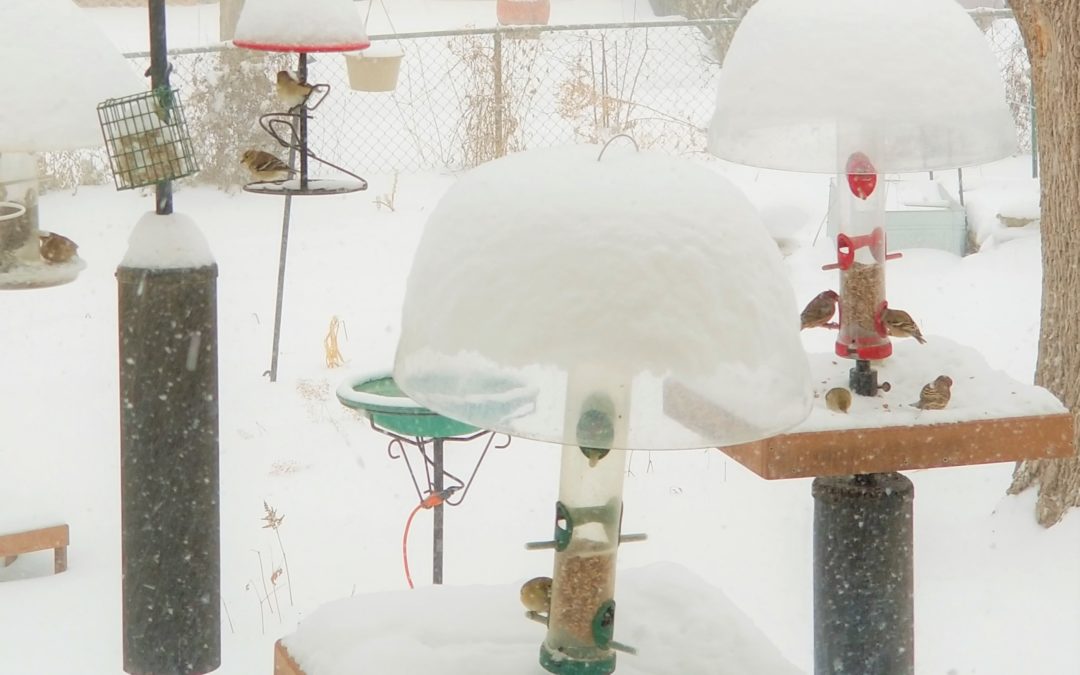As winter approaches, now is a great time to start feeding birds. Frost will kill the insects and as the natural seeds are depleted, food will become harder to find. Once they discover a feeder that is reliably filled with birdseed, the birds will become regular visitors.
Birdfeeding can be as simple as placing a feeder full of seed in your yard and waiting for the birds to find it. If you have not fed birds before, it may take from one day to several months before the birds in your area discover the new feeder. The types of birds you attract will depend on what kind of backyard habitat you have as well as the types of feeders and seed you provide.
There are several ways that birds feed. Some species prefer one or another almost exclusively. Others will feed wherever the food is available. Feeders come in a wide variety of materials and styles, so the first step is to decide how you want to provide the birdseed.
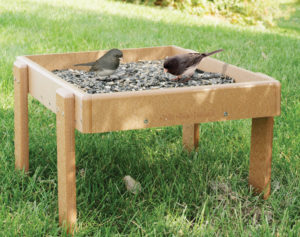
If you are interested in feeding birds on the ground level, a slightly elevated platform feeder will help keep the seed contained. Most have some type of drainage system which will allow the seed to dry out after snow or rain. You will want to use a seed blend high in white proso millet (not red millet), which is designed for ground-feeding birds like morning doves and juncos. A mix that contains some black oil sunflower seeds will also attract birds that feed at any level like cardinals and house finches.
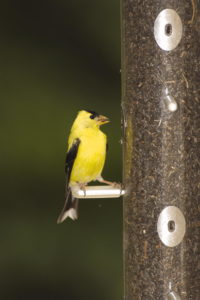
There are many varieties of feeders for feeding at elevated levels. Finch feeders are designed with small holes that allow only birds with small beaks to access the seed. Tiny seeds, such as Niger/Thistle or finely ground sunflower hearts will attract small birds like finches and chickadees to these feeders.
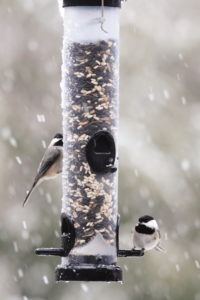
A standard seed tube has larger seed ports, allowing bigger birds to feed. For these feeders a single seed or seed blend that contains little or no millet is best. Oil sunflower, striped sunflower and safflower will attract a wide variety of birds such as cardinals, chickadees, nuthatches, and downy woodpeckers. I have been using Nutra-saff in my tube feeders because it discourages blackbirds and the goldfinches love it. Regular safflower has a shell that is apparently too hard for goldfinch beaks to crack open, as they do not eat it.
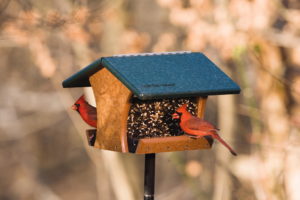
Hopper feeders are often designed so that some seed will spill on the ground for the ground feeding birds, while other birds feed. Consequently, this type of feeder will attract a wide variety of species especially if you use a seed blend containing sunflower and a small to moderate amount of white proso millet. Cardinals, finches, chickadees, blue jays, and many other birds will feed from the elevated hopper, while ground-feeding birds will eat what is spilled. However, feeding with hoppers tends to be messier than other feeders unless you position a tray below to catch the fallen seed.
Birds generally find their food by sight, so placing your feeder where it will be visible to them should decrease the time it takes birds to start feeding. Sometimes, sprinkling seed on the ground or on top of the feeder will let birds know food is available. Bird species tend to prefer one or two seed types over others, so it is a good idea to find out what the birds in your yard like best and provide that.
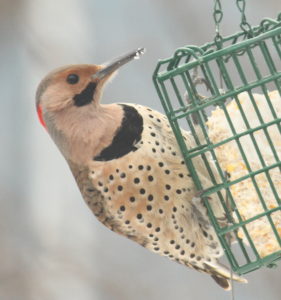
There are many types of specialty feeders, such as fruit, peanut and suet feeders, that you may add to attract even more kinds of birds.
Remember to keep your feeders clean and to change the food at least once a month. This will assure that the seed you provide is fresh and appetizing to the birds that frequent your feeder.

